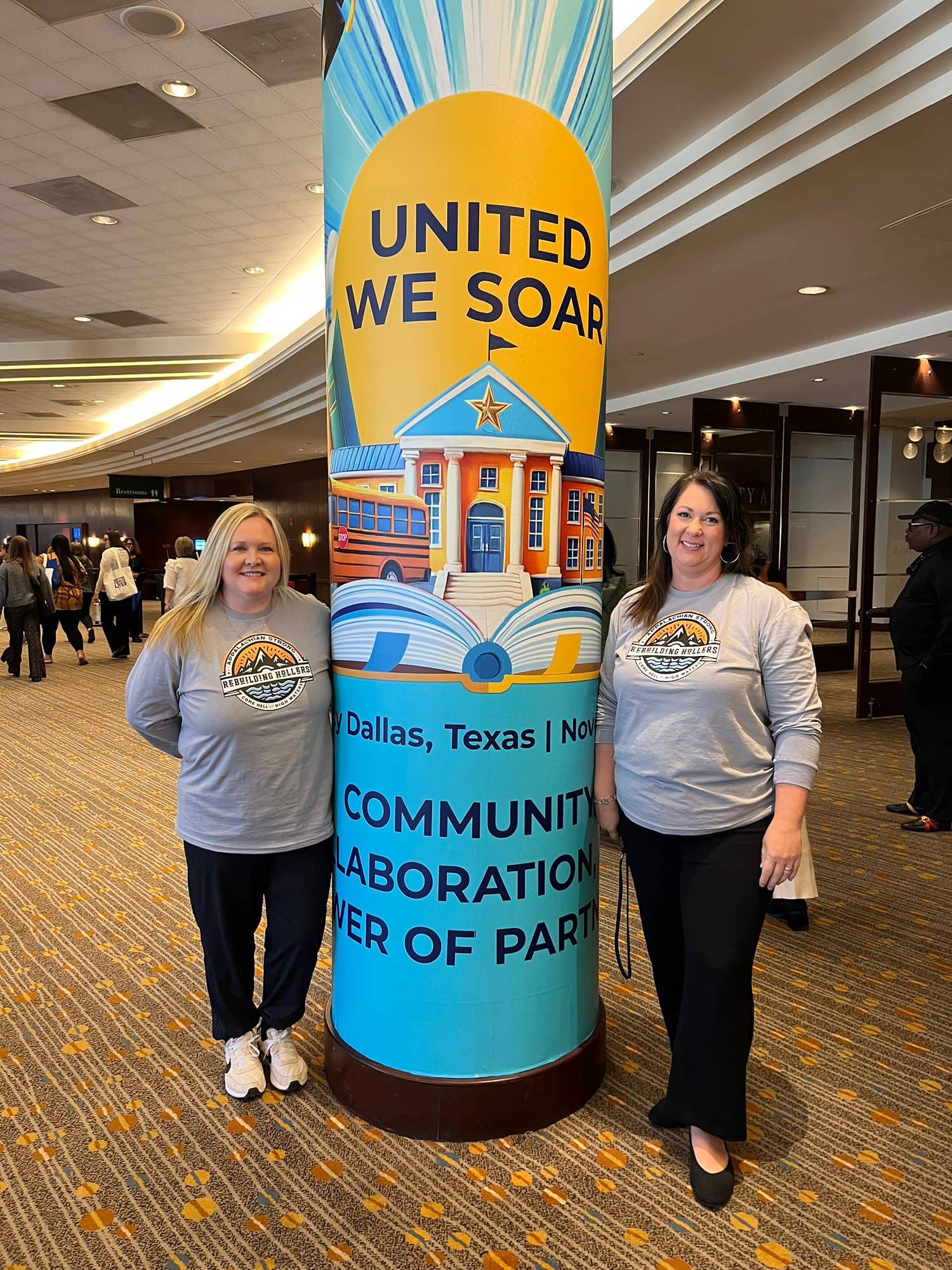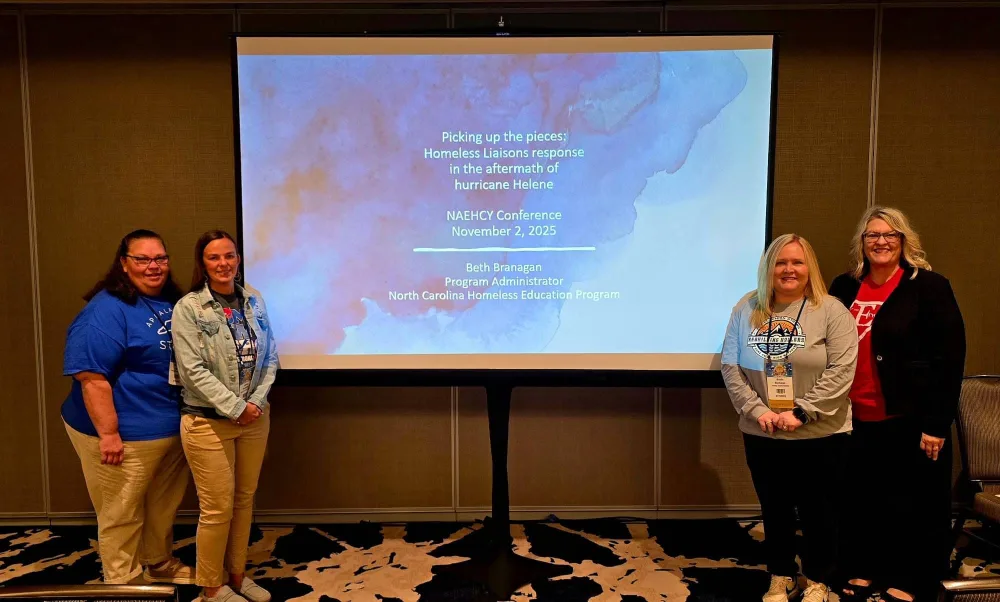
Four western North Carolina school district leaders recently shared their experiences responding to the devastating impacts of Hurricane Helene at the National Association for the Education of Homeless Children and Youth (NAEHCY) Conference in Dallas, Texas, on November 2.
The panel, titled “Picking Up the Pieces: Homeless Liaisons’ Response in the Aftermath of Hurricane Helene,” featured Kristin Buchanan of Yancey County Schools, Shannon Boyd of Buncombe County Schools, Michelle Mull of Haywood County Schools, and Ashley McCartha of McDowell County Schools. Together, they described the unprecedented challenges faced by school systems when the hurricane struck western North Carolina on September 27, 2024.
Hurricane Helene left behind mass destruction washing away roads, crippling infrastructure, and disrupting power, water, and communication systems. In some communities, the storm claimed the lives of students, family members, and staff. For local homeless liaisons, the task of supporting displaced and vulnerable students became both urgent and deeply personal.

“Our biggest challenge in those first days was simply finding our students and families,” said Buchanan. “With no phones, no internet, and roads impassable, we had to get creative just to make contact and make sure everyone was safe.”
Buchanan said it was an honor to bring their experiences to a national stage and to use what they learned to help others prepare. “It was amazing to have the opportunity to share our stories and to help others across the country understand what recovery really looks like for students and families after a disaster,” she said. “Being able to represent our region and highlight the resilience of our schools and communities was incredibly meaningful.”
The panelists also shared how the experience of Hurricane Helene has reshaped their approach to emergency planning, emphasizing the importance of collaboration, flexibility, and trauma-informed support. The session provided attendees with practical strategies for incorporating the needs of students experiencing homelessness into district emergency operations plans—ensuring that when disaster strikes, every student remains supported, connected, and cared for.






